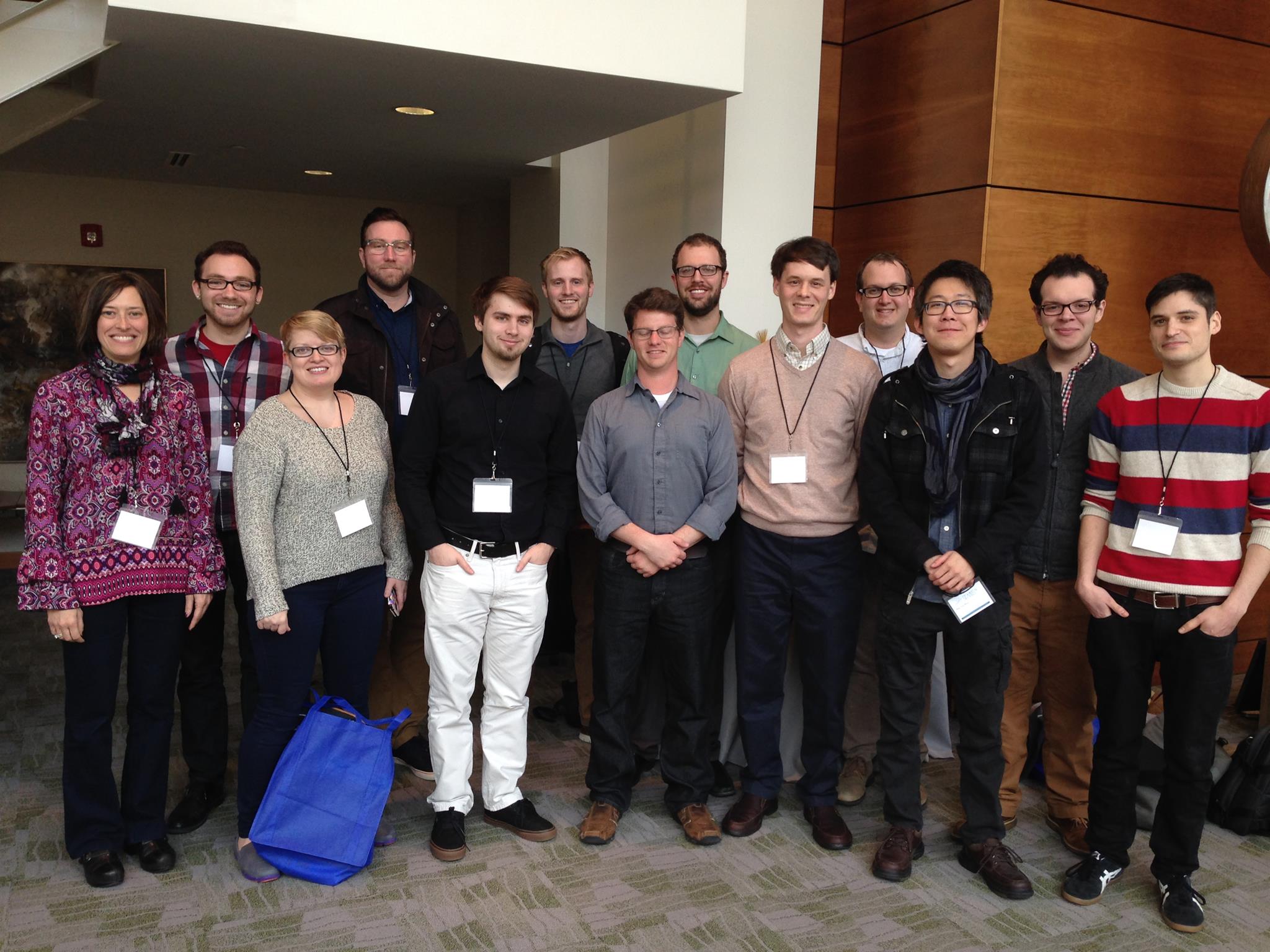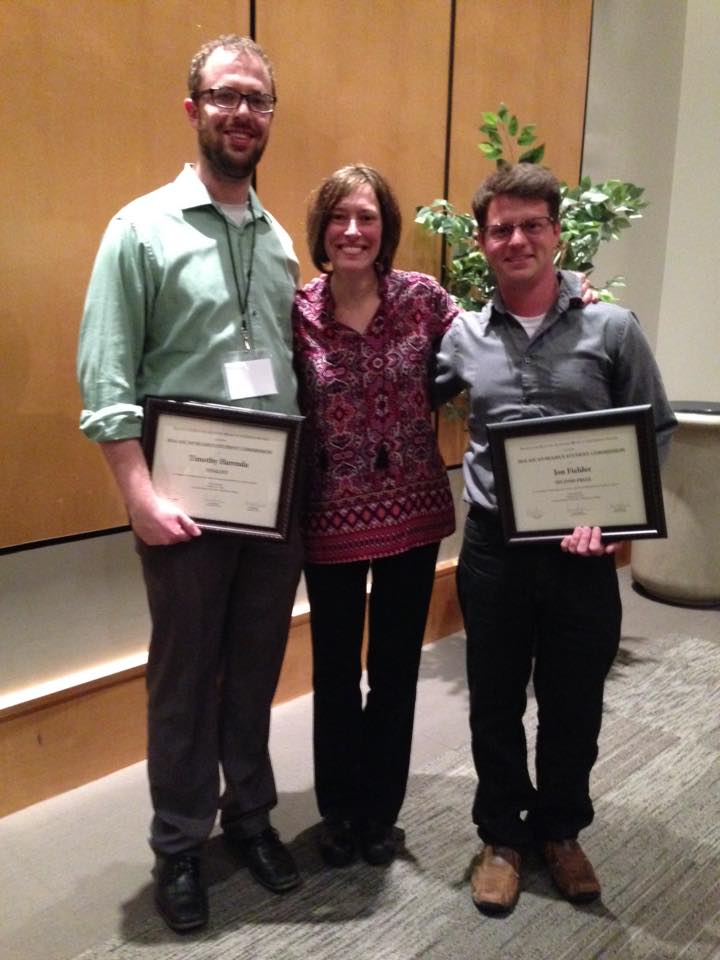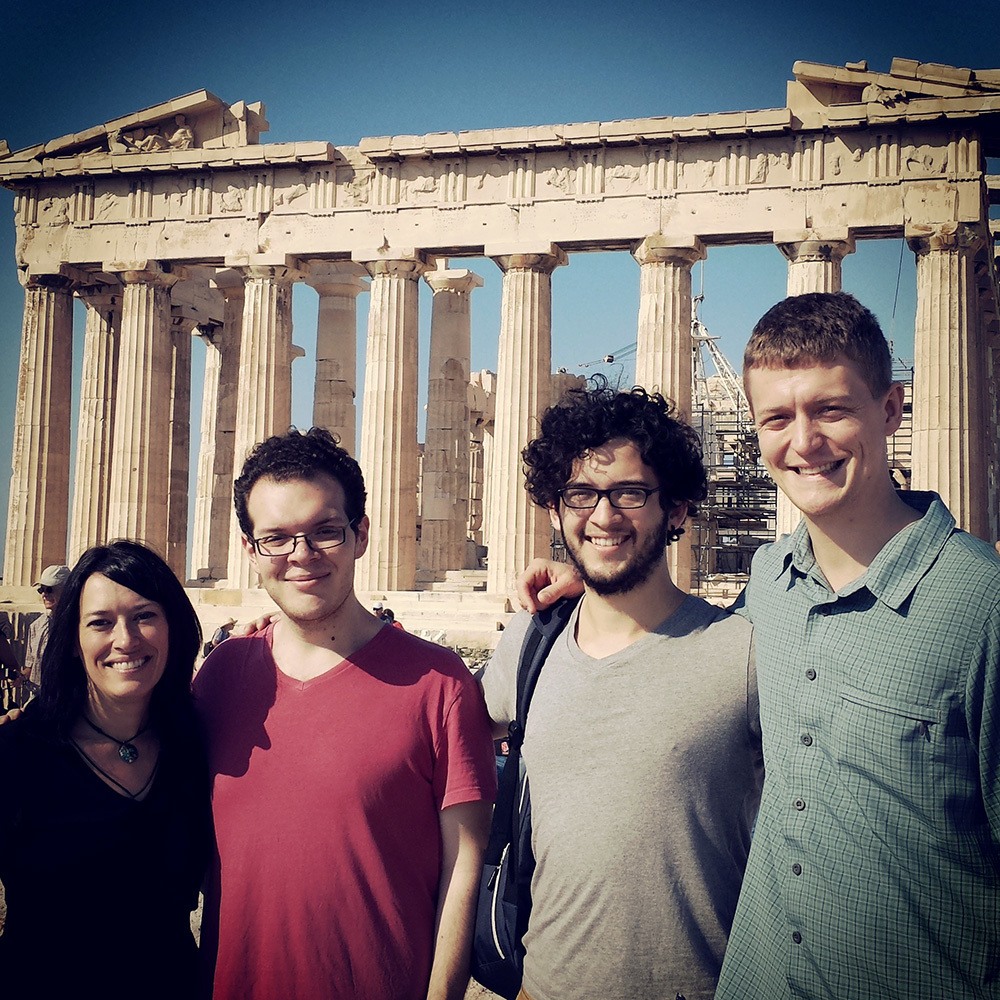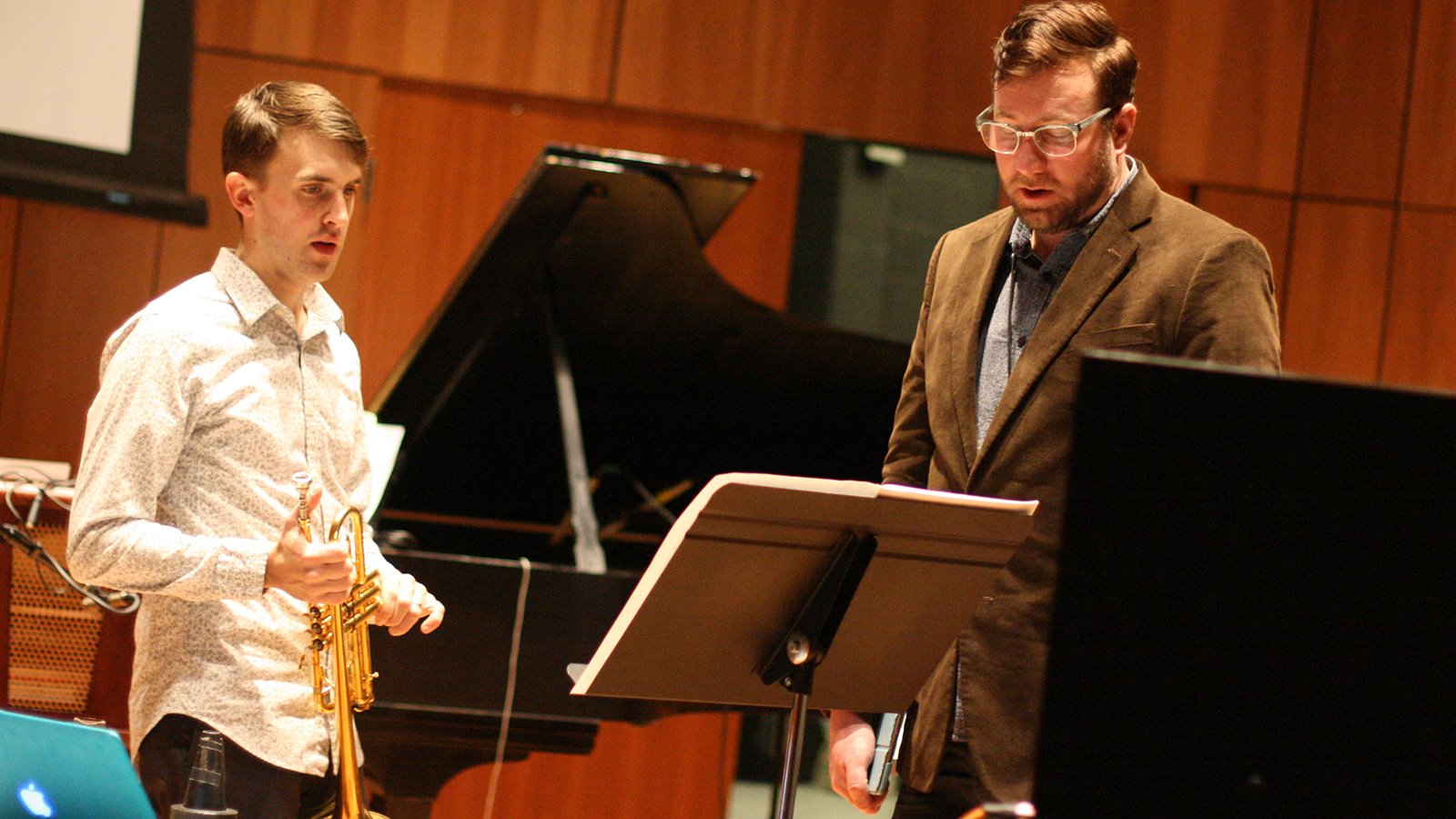Technology

BGSU current students, alumni, and faculty at the 2016 SEAMUS Conference in Statesboro, GA.
Bowling Green State University’s College of Musical Arts is home to an expanding, diverse music technology program. Students involved in music technology explore analog and digital audio techniques, computer music programming, experimental audio/animation, real-time interactive performance systems and recording techniques. Students interested in commercial recording can pursue a minor in Recording Technology. Each year the CMA produces technology-related concerts, hosting guests and presenting music created by faculty and students. Many concerts incorporate real-time interactive performance systems, video art and multi-media.




The Electroacoustic Studios provide a high-end accessible workspace for beginning music technology students. Each of the four digital audio workstation spaces is configured identically, allowing students to work comfortably at any system. The workstations are connected to a server that manages user accounts.
Audio System
HHB Circle 3A
Audio Hardware/ Controllers
MOTU 828 MKII (4)
MOTU Microexpress (2) and Microlite (2) USB MIDI interfaces
Mackie Control Universal (4)
Mackie 1402 (3) and 1202 (1) Mixers
Computer Hardware (4 workstations)
Apple Macintosh iMac 2.8GHz Intel Core 2 Duo, 2GB RAM, 500GB HD, 24-inch display
Computer Hardware (studio server)
Apple Macintosh Mac Mini 2.0GHz Intel Core 2 Duo, 2GB RAM, 160GB HD, plus 650GB external storage
Audio Software (available on each machine)
Logic Pro
Max/MSP/Jitter
DSP-Quattro
Reason
Final Cut Studio (Final Cut, DVD Studio Pro, Motion)
Ableton Live
Amadeus
Miscellaneous shareware/freeware (CSound, Cecilia, Frequency, SoundHack, etc.)
Audio Plugins (available on each machine)
Waves Native Gold Bundle
GRM Tools Classic and ST
Audio Ease Nautilus Bundle
Elemental Audio Systems Inspector
Pluggo
FXPansion Audio Unit Wrapper
Recording/Digital I/O
Sony MDS-JB 940 Minidisc units (4)
Zoom H4 portable hard disk recorders (2)
MIDI Equipment
Yamaha CS-1X multitimbral synthesizer/controller (4)
Kurzweil K-2000
EMU E-5000
Yamaha G50 guitar to MIDI converter
Built with funding provided by the Ohio Board of Regents, the new flexible 10.2 multi-channel research studio is housed in BGSU’s New Media and Emerging Technology Center. This facility supports high-end research in multi-channel audio, multi-media applications and interactive performance systems. Students and faculty researchers using this facility can reconfigure the sound system using any of the 13 current configurations, including stereo, quadraphonic, 5.1, 7.1, 7.1 Logic, 9.2, 10.2, Ambisonics and other surround and diffusion setups.
Audio System
Ten Genelec 8050A Active Studio
Monitors
Two Genelec 7070A Active Multichannel Subwoofers
Two Beheringer Ultralink Pros
Audio Hardware/Controllers
MOTU HD192 Core System Multichannel Audio Interface
MOTU Microexpress USB MIDI interface
Mackie Control Universal Primary Unit
Mackie Control Universal Expansion Unit
Mackie Control C4
M-Audio Evolution Series MK-461C
Computer Hardware
Apple Macintosh Pro 2.8GHz Quad-Core Intel Xeon (8 core)
4 GB RAM
1 TB internal hard drive
ATI Radeon HD 2600XT (Two dual-link DVI)
Dual 21” flat panel displays
Audio Software
Steinberg Nuendo
Logic Pro
Max/MSP/Jitter
DSP-Quattro
Final Cut Studio (Final Cut Pro, DVD Studio Pro, Motion)
Ableton Live
Miscellaneous shareware/freeware (CSound, Cecilia, Frequency, SoundHack, etc.)
Audio Plugins
Waves Diamond Bundle
Steinberg Surround Edition 2.0
GRM Tools Classic and ST
Audio Ease Nautilus Bundle
Elemental Audio Systems Inspector
Pluggo
Cyclops
FXPansion Audio Unit Wrapper
The recording control room features a state-of-the-art Digidesign system combined with Genelec 5.1 monitoring for professional experience in commercial recording. Students enrolled in recording technology courses use this facility to learn digital recording techniques, mastering and production, and film-related audio techniques including foley, automatic dialog replacement and film sound mastering.
Audio System
Genelec 1032A 5.1 surround with 7071A subwoofer
Audio Hardware/Controllers
ProTools|HD3 (with two 192 I/O audio interfaces - 24 analog inputs)
Digidesign Control 24
Computer Hardware
Apple Macintosh G5 dual 2.5Ghz
2 GB RAM
120 GB internal hard drive
370 GB external storage
DVD-RAM
Dual 20” flat panel displays
Audio Software
ProTools HD
Logic Pro
DVD Studio Pro
Toast Titanium/Jam
Final Cut HD
Audio Plugins
Waves TDM Platinum
Waves IR360 Convolution Reverb
TC|Tools TDM
Antares Autotune
Digidesign BNR
Line 6 Ampfarm
GRM Tools TDM
Sonic NoNoise
Recorders
Alesis ADAT-XT (3)
Alesis BRC Controller
Sony PCM-R500 DAT
Otari MX5050 MKIII
Signal Processors
AKG BX-20 reverberation chamber
Lexicon PCM-80
Digitech TSR-24
Yamaha SPX-90
Signal Processors
Approximately 80 microphones by manufacturers, including: Neumann, Schoeps, Sennheiser, AKG, Earthworks, SE Electronics, Shure and Crown.
Music Technology I (fall semester) Introduction to the principles of sound and digital audio (sound editing, processing, mixing). Includes hands-on investigation of course techniques and principles in a studio setting. Course materials are practiced during individual studio lab times.
Music Technology II (spring semester) Introduction to the principles of sound synthesis (Musical Instrument Digital Interface, sequencing, synthesizers, controllers). Includes hands-on investigation of course techniques and principles in a studio setting. Course materials are practiced during individual studio lab times.
Music Technology III (fall semester) Advanced concepts related to principles of sound, digital audio (sound editing, processing, mixing) and synthesis. Includes hands-on investigation of course techniques and principles in a studio setting. Emphasis on music programming languages. Course materials are practiced during individual studio lab times and tutorial session.
Music Technology IV (spring semester) Advanced concepts related to principles of sound, digital audio and synthesis relative to real time audio environments. Includes hands-on investigation of course techniques and principles in a studio setting. Emphasis on music programming languages. Course materials are practiced during individual studio lab times and tutorial sessions.
Survey of Music Technology (spring semester) Overview of music technology; use of computers in music (yesterday, today and tomorrow). Philosophical implications of technology and musical expression. Literature of music technology in pop, jazz and the avant-garde.
Experimental Digital Audio and Animation (summer semester) Introduction to experimental digital audio and time-based visual art. Focus on artistic expression through the successful integration of the principles of art and music. Students explore experimental animation techniques and the principles of electroacoustic music as they work to create multi-media art.
Recording Technology has been a course elective at Bowling Green State University since 1980. In 1990, the College of Musical Arts instituted a minor in Recording Technology. The requirements for the minor are Recording Techniques, Advanced Recording Techniques, Music Technology I, II and III and Musical Acoustics. Students also take interdisciplinary electives directly related to the recording industry, including courses in circuit design, business, marketing, computers and others. During their course of study, Recording Technology minors have opportunities to participate in internships at national-professional recording studios, giving them real-world experience in the recording industry. Advanced students also frequently work in the College’s Recording Services area, gaining practical skills by recording and post-producing CMA concert events.
Recording Techniques is an entry-level recording course covering the basics of sound propagation, acoustics, miking techniques, signal processing, digital editing, console automation, MIDI and basic recording terminology. In addition to small hands-on projects, the class participates in a group multi-track session with live musicians. Each student then creates a stereo mix of the session as a final semester project.
Advanced Recording Techniques is an upper-level course where students have more opportunities to directly use the recording studio. Students are divided into small groups and assigned hands-on recording and production projects, including “on location” two-track recording, digital editing, a radio commercial, a multi-track session and a Dolby 5.1 soundtrack (voice-overs, sound effects and music) to a movie clip. The course emphasizes “real-world” experiences, preparing students for possible careers in recording and commercial music.
Updated: 02/14/2018 01:47PM
